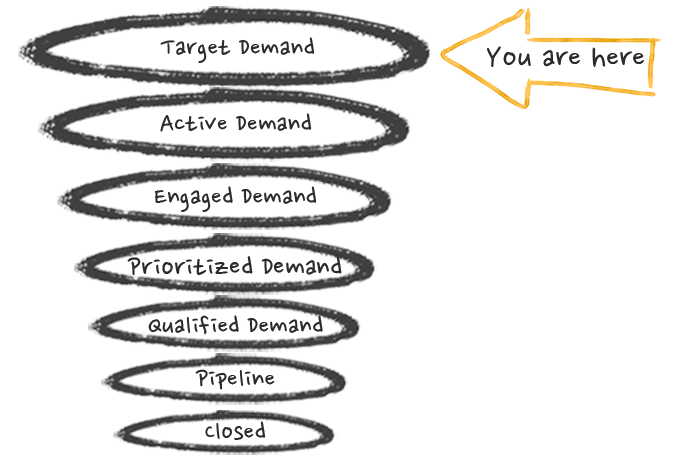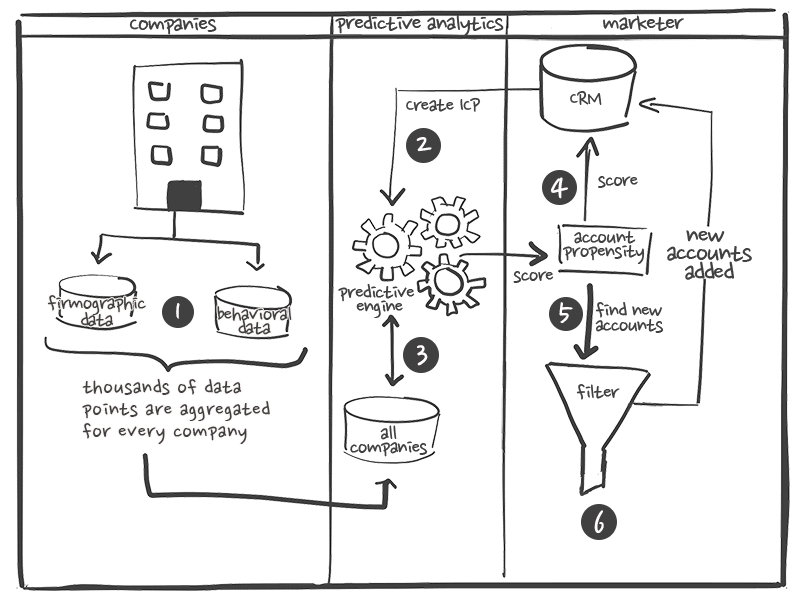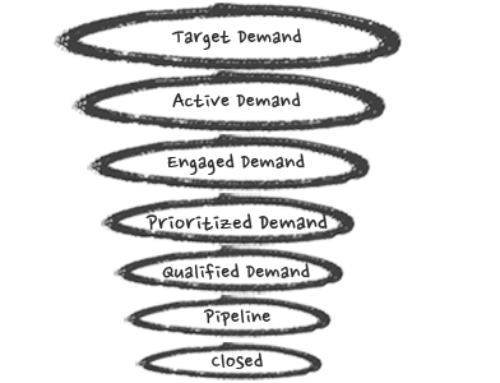
The principal objective in the Target Demand stage is to determine the size and nature of your total addressable market. Determining the total addressable market can and should be done on at least three different levels:
- Your entire company’s products or services.
- For each product or service that you sell.
- For each marketing campaign.
I use it for all three of these instances but find it particularly critical to use it in marketing for campaign modeling.
Stumbling blocks
Clear market definition. Your product team should give you a clear view of the types of companies and personas that each of your products or services are designed for. In the absence of that information, you will need to do the research yourself. Many companies put the marketing team under pressure to “just get it done,” but this is a classic “slow down to go fast” situation. Taking the time to understand your target prospect base will save lots of time and money in the future.
Sizing your market. Sizing markets is always a challenge and often a combination of art and science, but the latest class of predictive analytics tools can be a big help (more on that later).
Campaign sizing. The sizing for each campaign needs to be based on the addressable market, defined as the market you can reach in the channels you have available to you. There is little point to including an audience you have no way to reach. Don’t be afraid to think differently as there are ever more marketing channels available. For example, you may have never tried Facebook for B2B advertising, but might find that its unique targeting capabilities provide access to an audience that is not accessible to you otherwise.
Preparing for success
Do market sizing at three different levels:
- The aggregate market sizing for your company’s products or services, which will be helpful with your annual budgeting and long-term planning.
- For each product or service that you sell, which serves the purpose of forcing alignment with your product management teams to ensure that the products or services that they are creating have a viable market.
- For marketing campaigns, so you can set targets for each campaign that you run. After all, if you don’t know the size and nature of your target audience for a campaign, it is going to be pretty hard to model your results and then test and optimize to achieve them.
Traditional methods for audience sizing are market research, prospect interviews, conversations with sales teams, focus groups, surveys and company database repositories such as D&B Hoovers.
Depending on the types of products or services you sell, you might be able to turn to generic, firmographic types of targeting such as industry, company size, and location. Some of those firmographic commercial databases also include more granular data such as where the company is in its lifecycle, what technology it employs, and so on.
Keep in mind that the majority of information about companies is algorithmically-driven. Only public companies have to disclose their finances. Even then there often isn’t a lot of detail beyond the regulatory-required financial statements. Because of this, company information database vendors have to rely on algorithms to populate their firmographic data fields. What you will get is data that is directionally correct in most cases, but the accuracy isn’t terribly high and seems to be a function of company size: the smaller the company, the more questionable the data.
Predictive analytics
A more effective approach to determining Target Demand is through the latest class of predictive analytics systems designed for sales and marketing. Predictive analytics utilizes a combination of correlation and regression analysis across thousands of data points, along with artificial intelligence to identify and rank companies with the highest propensity to purchase your products or services. These tools don’t come cheap, but they can be very cost-effective and deliver excellent ROI by getting your marketing and sales teams focused only on customers with a propensity to buy. I have used the Anaplan Predictive Insights tool with good results.
Predictive analytics tools provide you with something of an ideal customer profile, but more importantly generate lists of accounts, each with a propensity-to-buy score. Additionally, information from the data they are collecting is available to you so that you can further segment and customize your campaigns. Want a campaign that targets high propensity accounts that have developed their own apps? How about accounts that use SAP? What about high-propensity accounts in the Miami metro area where you are hosting a dinner? You can do all of those things with these tools.

How predictive analytics works (simplified):
- Thousands of firmographic and behavioral data points are collected about every company.
- You feed the predictive engine with names of customers, former customers, pipeline and closed lost accounts which creates ideal customer profiles.
- Those ideal customer profiles are compared to the database of all companies.
- All companies are scored for the propensity to buy your products or services.
- You can then output all the companies with a high propensity to buy or
- Filter those against any of the thousands of data points that are in the predictive engine, for example in a specific geographic area, industry, or positions companies are hiring for.
There are two areas of caution that you need to be aware of:
- Predictive analytics tools need sufficiently large data training sets to provide high enough confidence scores. The data you provide will typically be a combination of your customer list, former customer (churn) list, open opportunities, closed lost opportunities, accounts worked, and so on. Without a large enough data set to get to high-confidence scores, it would not be worth it. Fortunately, you should be able to get the tool vendors to give you an honest assessment of your data and maybe even run a proof-of-concept to make sure that it will work for you.
- Predictive analytics tools tell you which accounts to target, not individuals; you will need other resources to identify the contacts in each account that make up the Demand Unit.
Team makeup
Ideally, your ideal customer profile work is an integral part of your product management team’s process, and you will be able to get this information from them. They should be able to provide you with a clear articulation of who the product is for, in which specific tasks it will be used, which customer challenges it solves, and the environment in which it will be used. Without that kind of information, not only will you challenged with the audience/persona definition at this Target Demand stage in the Demand Unit Waterfall, but your marketing and sales teams will struggle at each stage down the Waterfall.
It is also critical to engage with the sales team when defining your target audience. Not only does it pull them into go-to-market planning from the get-go, but it ensures a higher level of alignment and teamwork when both are working to the same set of assumptions.
Deliverables
The most important output will be a list of accounts for each campaign you are running. If you are also able to identify contacts in each account, that will also help you further down the waterfall but isn’t a requirement in this Target Demand stage.
Measuring success for Target Demand
The principal KPI in this Target Demand stage is the number of accounts that represent the total addressable market for your business, product or campaign. Measurements of reach and engagement will happen lower in the Demand Unit Waterfall.



